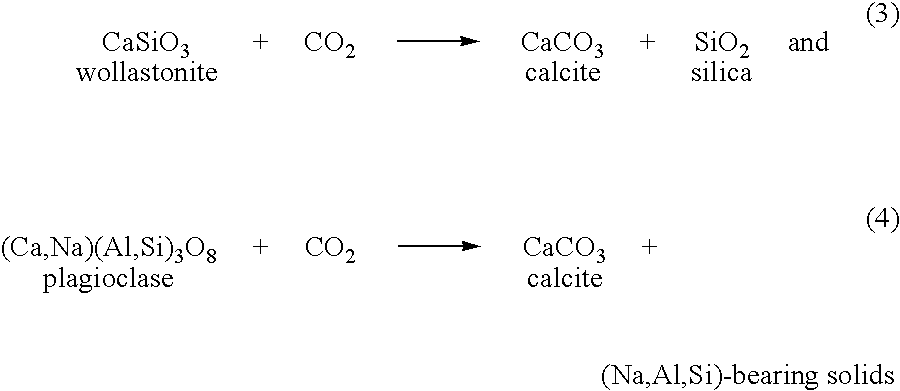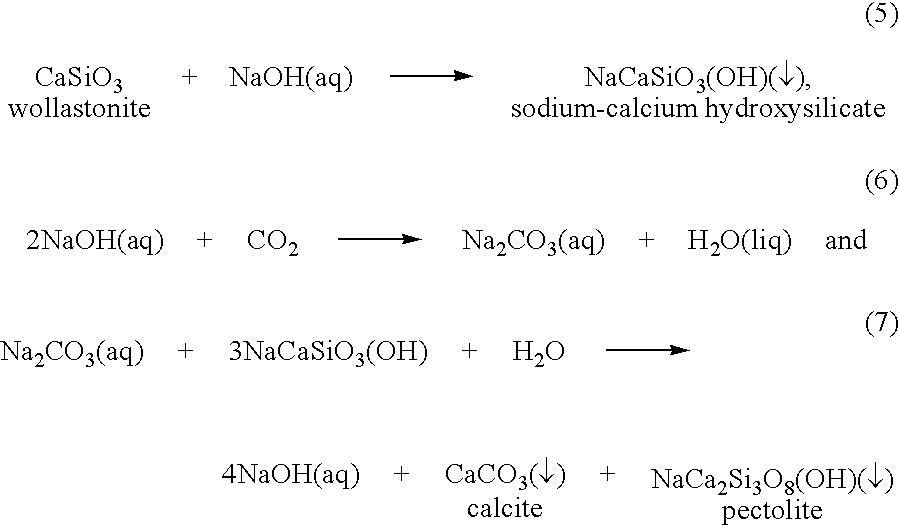Carbonation of metal silicates for long-term CO2 sequestration
a technology of metal silicates and carbonation, which is applied in the direction of lithium compounds, separation processes, alkali metal carbonates, etc., can solve the problems of long-term reservoir integrity not being guaranteed, affecting the quality of co2 transport, etc., and achieving long-term transport of liquid co2 over long distances by truck, train or ship, would be extremely expensive and perhaps totally impractical
- Summary
- Abstract
- Description
- Claims
- Application Information
AI Technical Summary
Problems solved by technology
Method used
Image
Examples
Embodiment Construction
[0025]Many different types of metal-silicate feedstocks are amenable to carbonation by the invented process, including naturally occurring silicates such as those present in rocks and clay-rich formations, as well as silicates present in industrial waste products such as fly ash and waste concrete. Typically, the metal-silicate feedstock is composed of one or more calcium silicates, magnesium silicates, iron-bearing silicates (such as basalt), or mixtures thereof, although other types of silicates can also be used. Some nonlimiting examples of these silicates are described below. (Silicate feedstocks are referred to collectively herein as “metal silicates” with the understanding that this designation includes any natural or man-made material, in the crystalline or amorphous state, that contains at least one metal along with silicon. By this definition, aluminosilicates are metal silicates because they contain a metal, aluminum, along with silicon.)
[0026]Calcium silicates include wol...
PUM
| Property | Measurement | Unit |
|---|---|---|
| pressure | aaaaa | aaaaa |
| pressure | aaaaa | aaaaa |
| temperature | aaaaa | aaaaa |
Abstract
Description
Claims
Application Information
 Login to View More
Login to View More - R&D
- Intellectual Property
- Life Sciences
- Materials
- Tech Scout
- Unparalleled Data Quality
- Higher Quality Content
- 60% Fewer Hallucinations
Browse by: Latest US Patents, China's latest patents, Technical Efficacy Thesaurus, Application Domain, Technology Topic, Popular Technical Reports.
© 2025 PatSnap. All rights reserved.Legal|Privacy policy|Modern Slavery Act Transparency Statement|Sitemap|About US| Contact US: help@patsnap.com



